
Webinar for using the Approaching Hamlet Module
- Subject:
- Arts and Humanities
- Literature
- Theater
- Material Type:
- Lecture
- Provider:
- Reimagine Teaching
- Provider Set:
- Utah Shakespeare Festival
- Date Added:
- 12/08/2020

Webinar for using the Approaching Hamlet Module
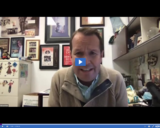
Theatre Education Webinar for Secondary Educators
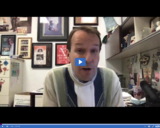
Webinar for using the Theatre 101 Module
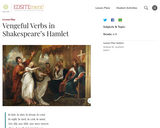
Expose middle school students to a first taste of Shakespeare from the angle of the ghost story and launch into the subject of verbs. In this lesson, they learn how Shakespeare uses verbs to move the action of the play. Students then distinguish generic verbs from vivid verbs by working with selected lines in Hamlet's Ghost scene. Finally they test their knowledge of verbs through a crossword interactive puzzle.

This is a video read-aloud of The Very Hungry Caterpillar. In the internationally acclaimed The Very Hungry Caterpillar, a tiny caterpillar eats and eats…and eats his way through the week. Taken from The Very Hungry Caterpillar and Other Stories collection. Based on Eric Carle's picture book.

A fun way for students to complete a visual book report using Adobe Express video maker. Not only is it more enjoyable than typing up pages of information, but the whole class can enjoy them as well. Students will be required to brainstorm as partners or a group and find creative ways to share the theme, characters, setting, events, and plot from the text through video format.Thumbnail image: "Library with Hanging Bulbs" Photo by Janko Ferlic (Unsplash.com)

Students will engage in a photo scavenger hunt then tell a story using the images taken.
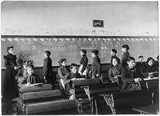
RI.6.6, W.6.1a, W.6.1b, W.6.1e, W.6.4, SL.6.1d, SL.6.4, SL.6.6Voices of Native American Boarding Schools Audio Museum Performance TaskCreate a museum exhibit made up of audio recordings using narratives bystudents of American Indian boarding schools.Steps1. Select a text (a poem, personal narrative, etc.) written by a survivor of the boarding schools.2. Write a preface for the text that introduces it and provides context.3. Write a reflection that explains why the text is meaningful.4. Record yourself reading your preface, text, and reflection aloud using proper and respectful intonation, volume, and pacing.5. Review and re-record your reading, polishing it to perfection!6. Welcome guests to the audio museum! Listen to the recordings of your classmates, and answer questions about three classmates’ recordings on a note-catcher.8. Engage in a whole class discussion about the connections between the performance task and the module overall.PurposeThrough our work before and during the audio museum, we can help make sure that these powerful stories about American Indian boarding schools are exposed to a wider audience.
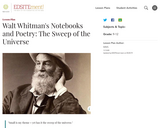
Clues to Walt Whitman's effort to create a new and distinctly American form of verse may be found in his Notebooks, now available online from the American Memory Collection. In an entry to be examined in this lesson, Whitman indicated that he wanted his poetry to explore important ideas of a universal scope (as in the European tradition), but in authentic American situations and settings using specific details with direct appeal to the senses.

In this lesson, students explore the historical context of Walt Whitman's concept of "democratic poetry" by reading his poetry and prose and by examining daguerreotypes taken circa 1850. Next, students will compare the poetic concepts and techniques behind Whitman's "I Hear America Singing" and Langston Hughes' "Let America Be America Again," and have an opportunity to apply similar concepts and techniques in creating a poem from their own experience.

A fun way to get students to start thinking about who they currently are as a reader and what their reading goals for the new school year should be. Thumbnail Image Credit: "Reading" by be creator is licensed with CC BY 2.0. To view a copy of this license, visit https://creativecommons.org/licenses/by/2.0/

Professor Kate Rushin describes the Harlem Renaissance as a large social and cultural movement fueled by many factors in this video from A Walk Through Harlem.

Past meets present in this lesson in which students practice verb tense when they write personal short stories that they then publish in a flip book.

Students will watch a video of a storyteller coming up with a rap that tells a story. They will identify story elements (who, what, and where), and record significant details. The next lesson plan ,Using Story Elements to Write a Rap, has students creating their own rap with the story elements.

This lesson will guide students to find details about a story that answer the questions: who, what, where, when, why, and how. They will then take those details and create a Mac Keynote Presentation to show others what they know about a story. This lesson plan will help students meet the Second Grade English Languate ArtsReading: Literature Standard 1Ask and answer such questions as who, what, where, when, why, and how to demonstrate understanding of key details in a text. The Lesson Plan's Thumbnail image was found at: https://www.dreamstime.com/photos-images/fantasy-panda.html

This lesson utilizes the Ute Indian Tribe of the Uintah and Ouray Reservation (UIT) tale, “Why Buzzard Is a Loner” to enhance comprehension skills, provide an introduction to the importance of personal hygiene and drama. Although some Native American Indian stories can only be told during the winter time, this story can be told any time of the year. The tale will be read aloud to the students who will then dramatize the story as it is read again. Then students will have a presentation from a health practitioner, school counselor or the school nurse on healthy teeth maintenance (i.e., brushing, flossing, rinsing, etc.)Extensions include learning more about birds in Utah and lessons that give more information about the Ute people. The cultural note states, “Just as the birds in this story held a council meeting to decide how to deal with Buzzard. Ute people, to this day, have council meetings to discuss problems and solutions for their people. At these meetings, everyone has the right to express his or her opinion and be heard and listened to.”

In this lesson, students will learn about the Paiute Indian Tribe of Utah through a slide show presentation that helps students learn more about traditional vs. current ways of living, learning and governing. Each of these short descriptions help students to better understand that the Paiute people continue to thrive in Utah.Students will also listen to a Paiute Tale which is part of the Native American Indian Literacy Project and be able to use the book as an English Language Arts comprehension activity. The extensions and additional resources help the teacher to be aware of other ways that students can engage.
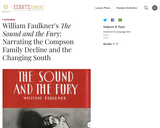
Published in 1929, The Sound and the Fury is often referred to as William Faulkner's first work of genius. Faulkner's style is characterized by frequent time shifts, narrator shifts, unconventional punctuation and sentence structure, as well as a stream-of-consciousness technique that reveals the inner thoughts of characters to the reader. This curriculum unit will examine narrative structure and time, narrative voice/point of view, and symbolism throughout The Sound and the Fury.
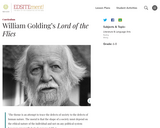
William Golding's Lord of the Flies is a novel that engages middle school students in thought-provoking discussion, and provides practice in literary analysis skills. The three lessons in this unit all stress textual evidence to support observations and generalizations uncovering the novel's central character traits, symbols and themes.
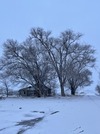
This lesson is designed for beginning writers to develop an understanding of opinion/persuasive writing. Students will examine a piece of work written by an author using opinion writing. Students will be guided through how to use a graphic organizer to help organize their writing and to assure all the proper elements have been included in their opinion writing. Students will be able to demonstrate competency towards standard by generating written or pictorial responses."Winter" by Sarah Mitchell, February 2022, Public Domain.